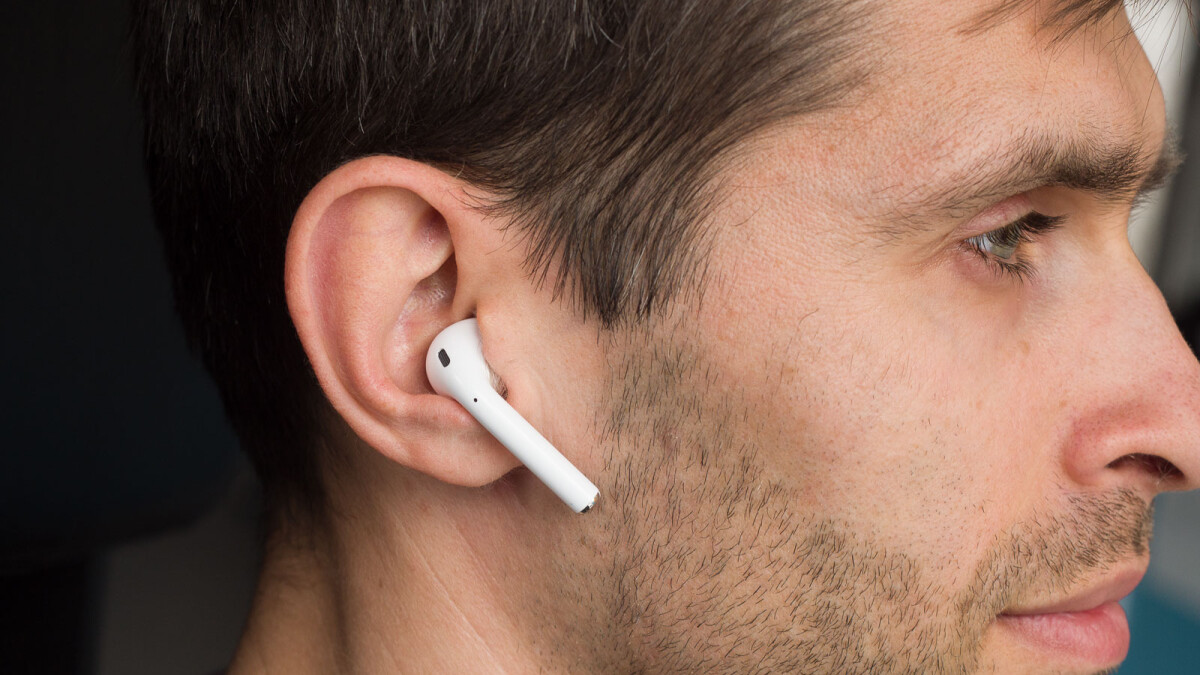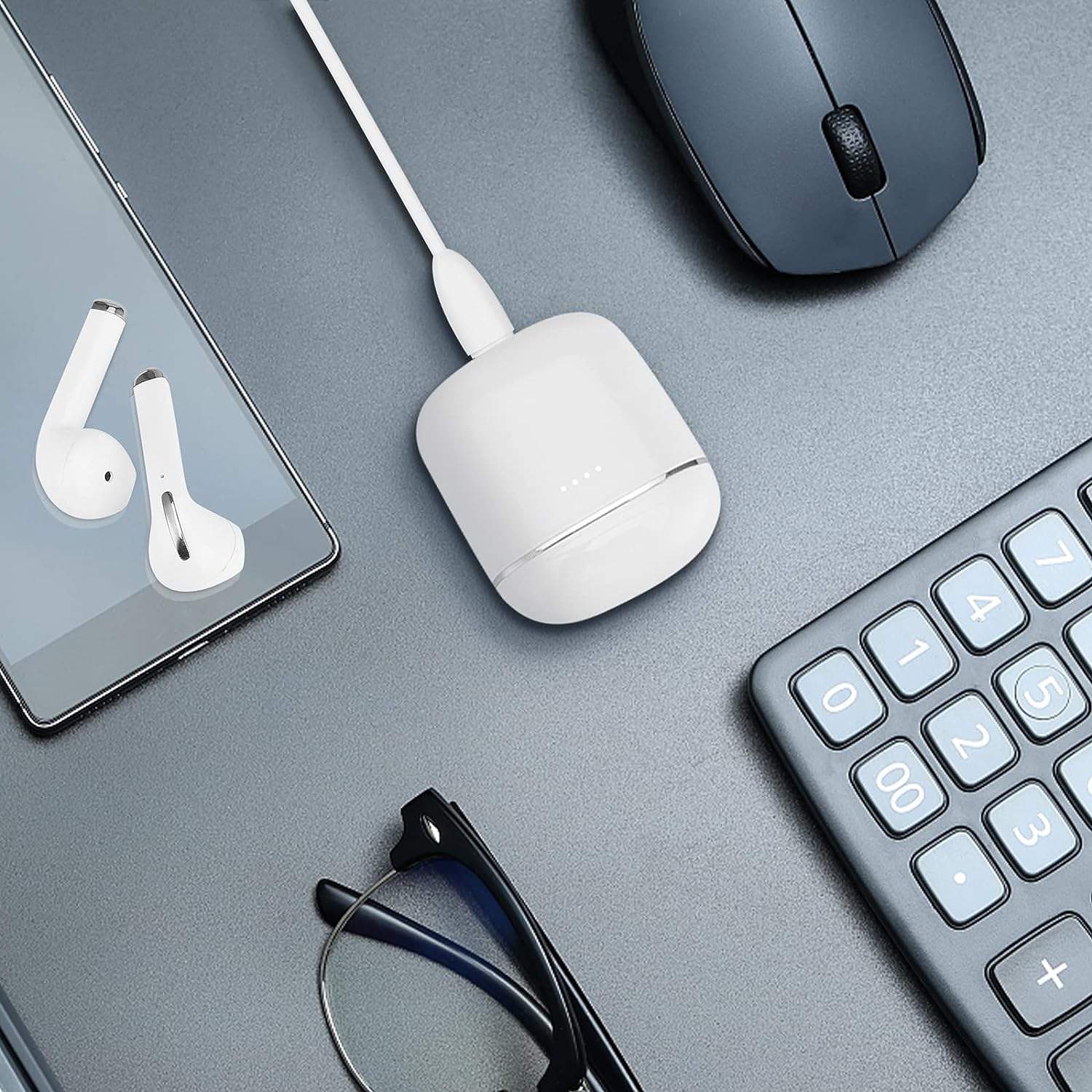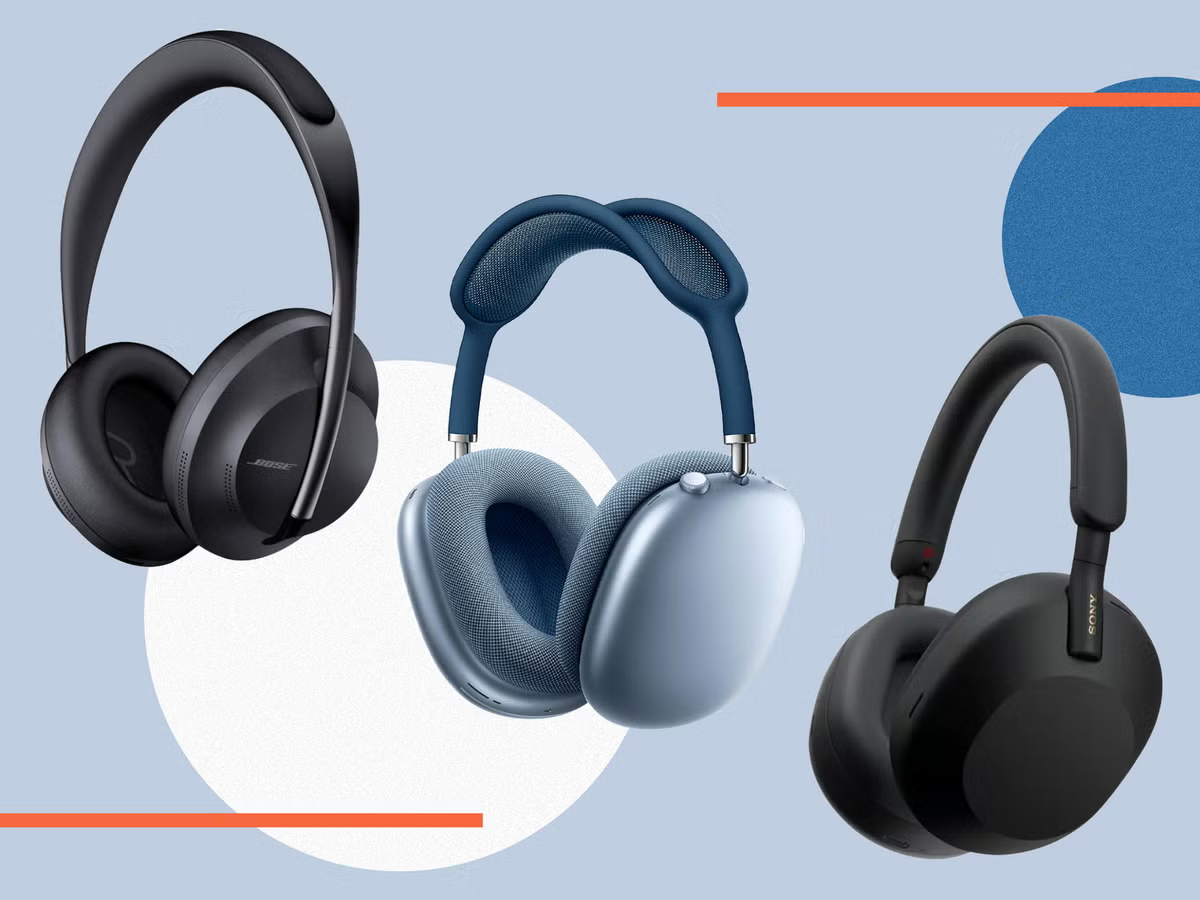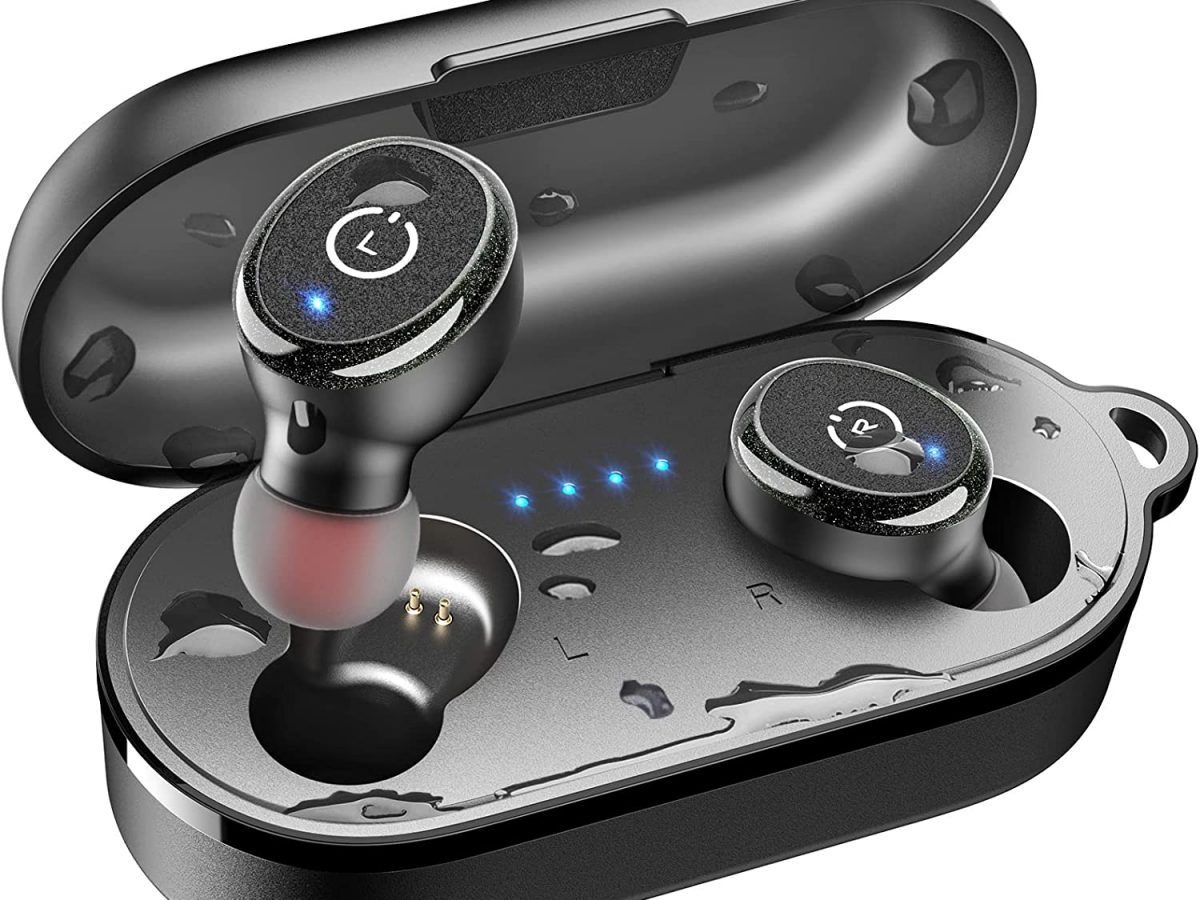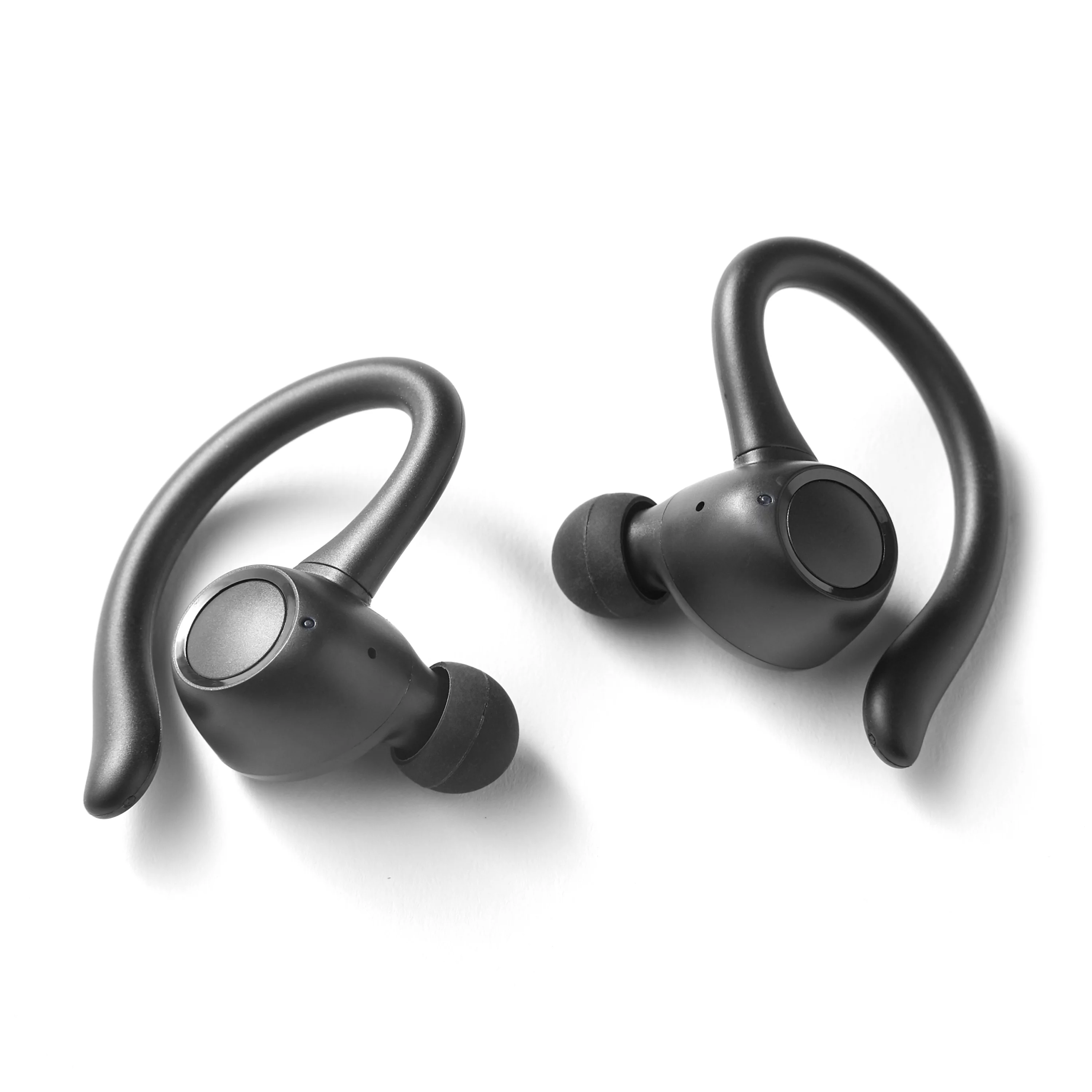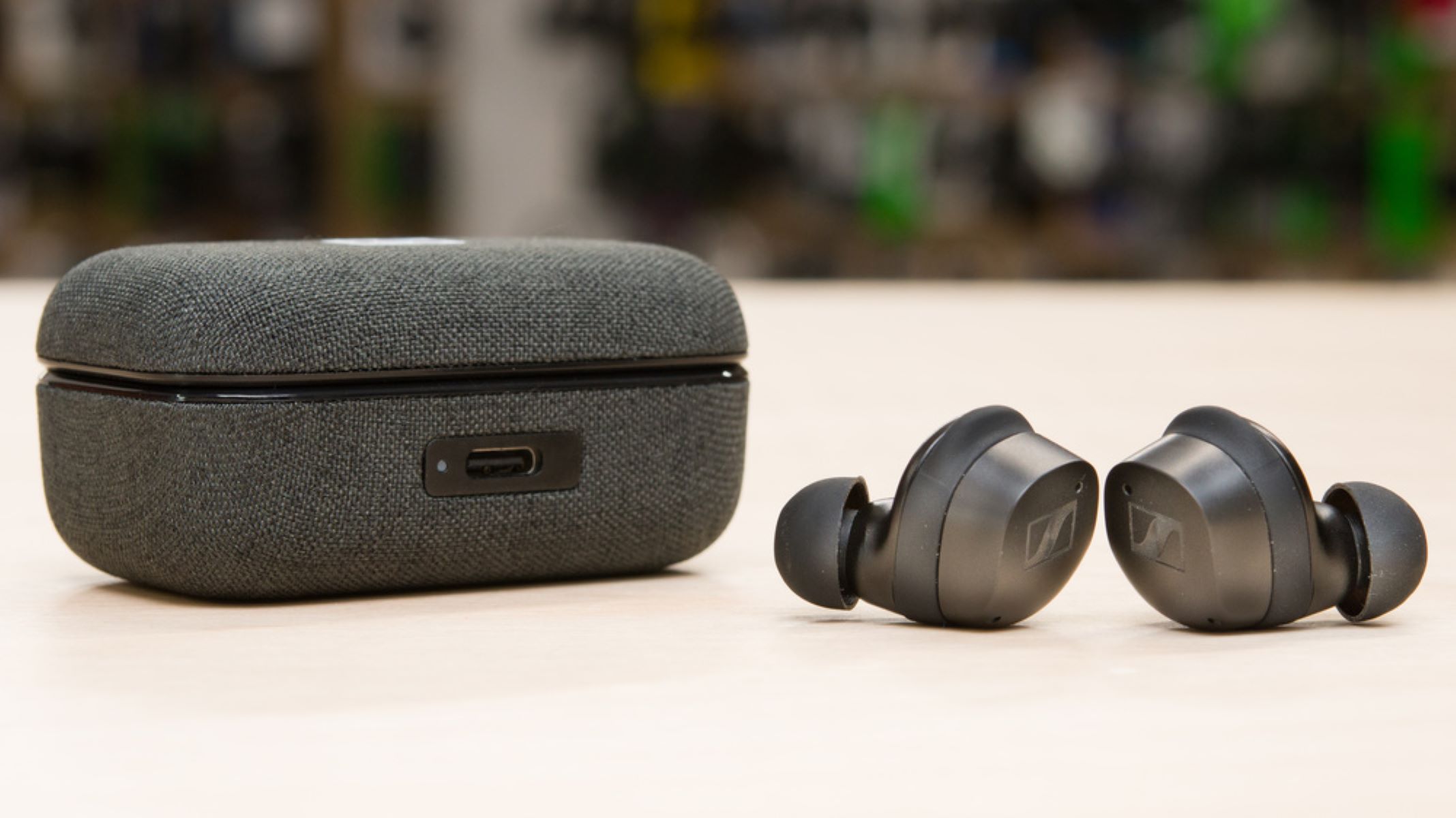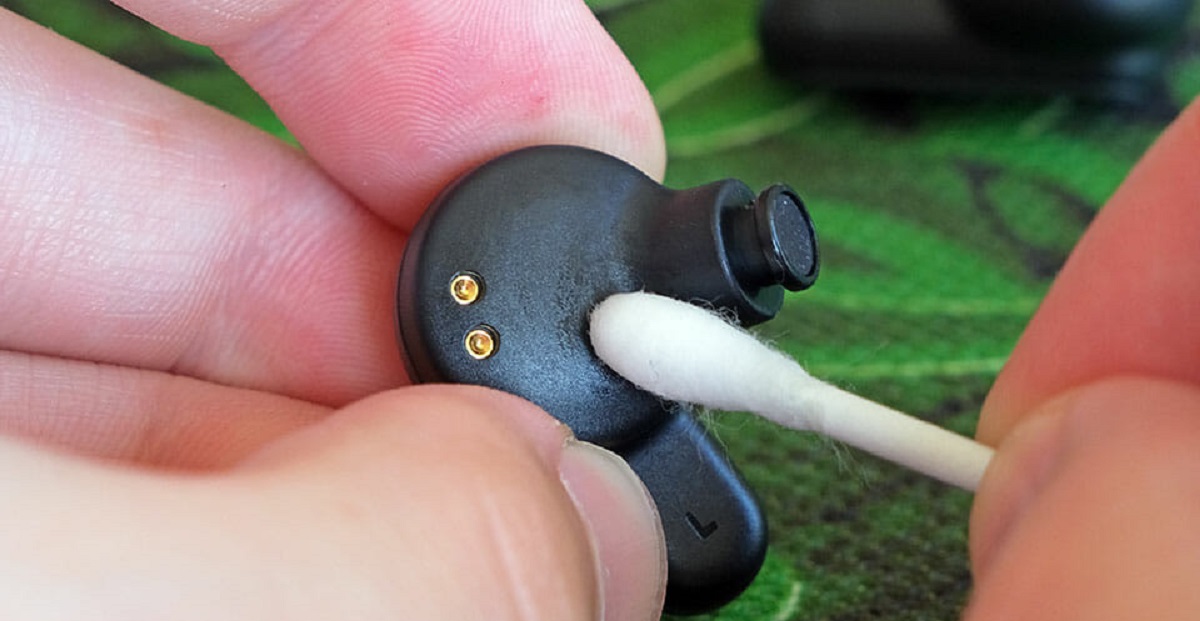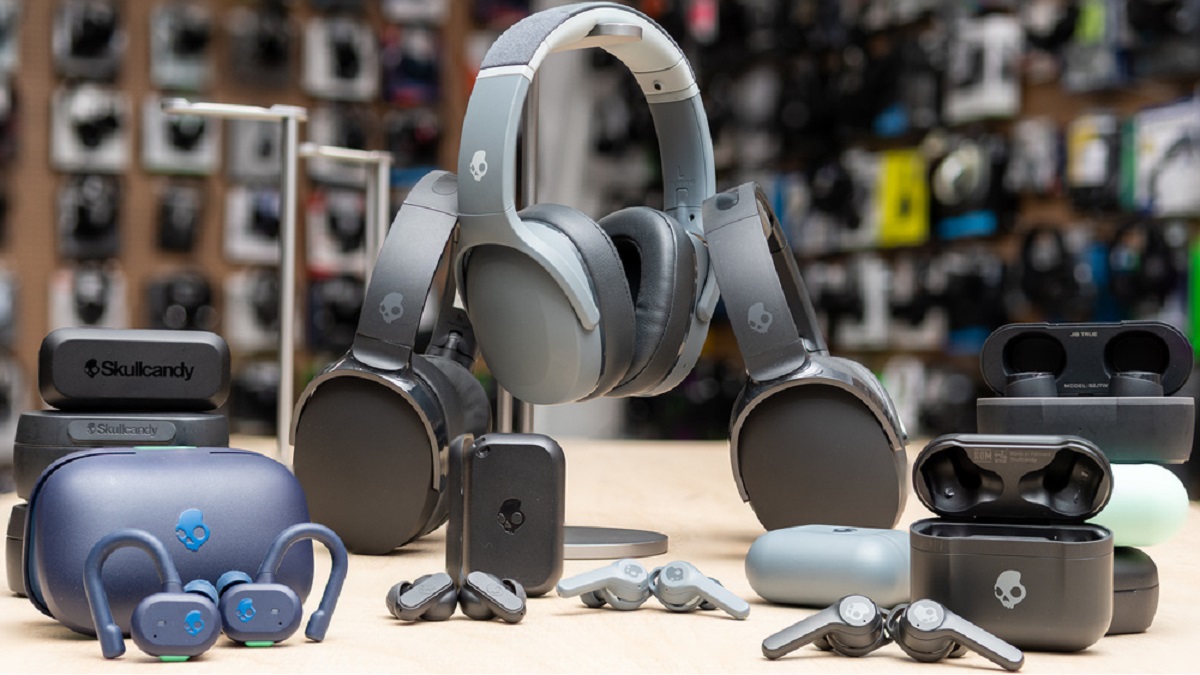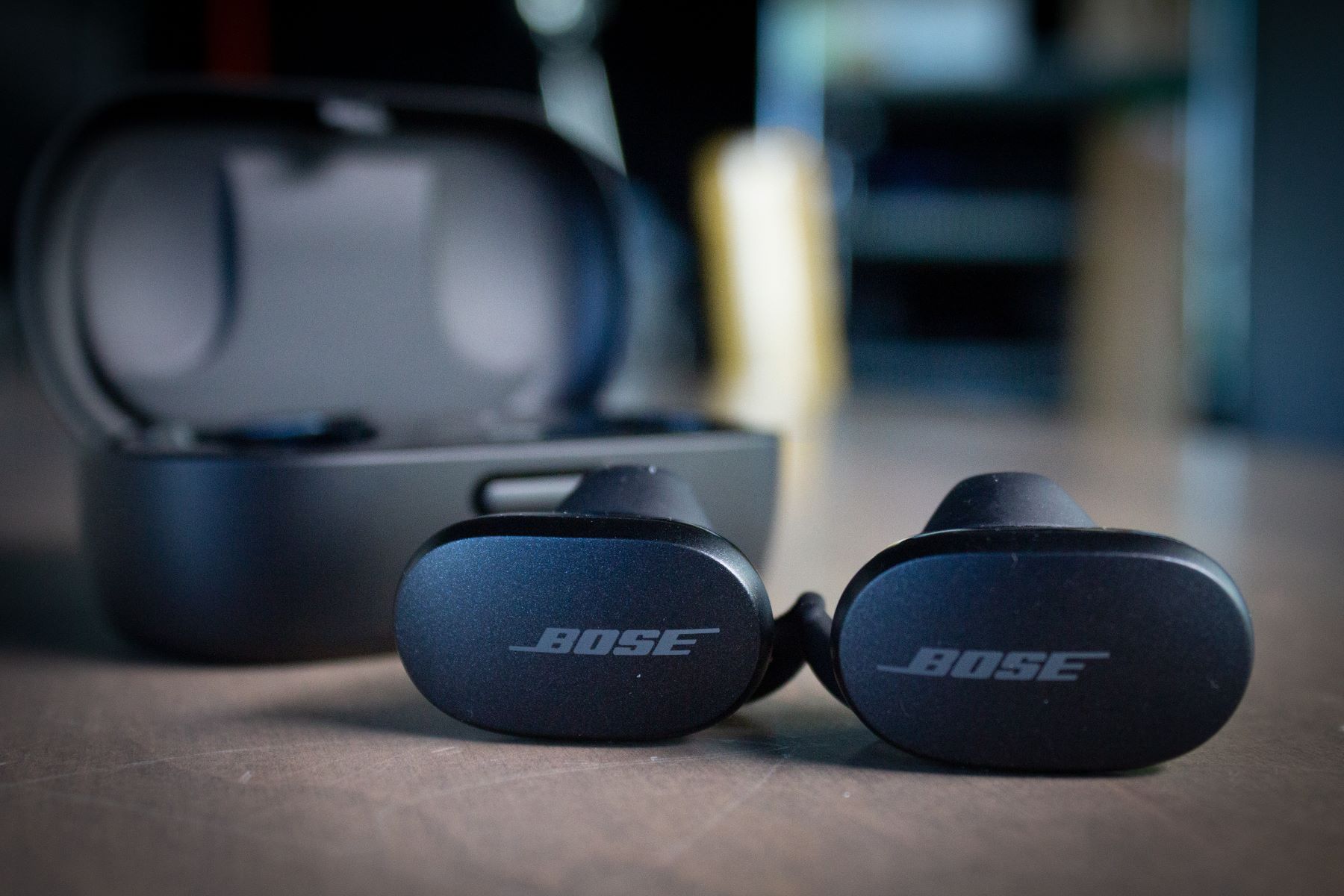Introduction
Wireless earbuds have become increasingly popular in recent years, offering a convenient and hands-free audio experience. These tiny, portable devices allow us to listen to music, answer calls, and enjoy other audio content without the hassle of tangled wires. However, with the surge in usage, it’s natural to wonder about the safety implications of using wireless earbuds.
In this article, we will explore the potential health concerns associated with wireless earbuds. We will delve into the topic of electromagnetic radiation exposure, discuss the safety of Bluetooth technology, and address possible issues such as hearing loss, ear infections, and allergic reactions. By understanding these aspects, you can make informed decisions on how to use wireless earbuds safely.
It’s important to note that the aim of this article is to present information and raise awareness rather than create unnecessary alarm. The purpose is to provide a balanced view of the potential risks involved with wireless earbud usage and arm you with knowledge to make informed decisions about your personal safety.
Now, let’s dive deeper into the world of wireless earbuds to better understand the potential health concerns associated with them.
Understanding Wireless Earbuds
Wireless earbuds are compact audio devices that connect to your smartphone, tablet, or other compatible devices wirelessly, using Bluetooth technology. Unlike traditional headphones that require a physical connection, wireless earbuds provide a seamless audio experience, allowing you to enjoy your favorite music or podcast without being tethered by cables.
These earbuds typically consist of two separate earpieces that fit snugly in each ear. They come with a charging case that not only keeps them protected when not in use but also charges them for uninterrupted usage. Some models may also include additional features like touch controls, noise cancellation, or built-in microphones for hands-free calling.
Many wireless earbuds offer a high level of convenience and portability, making them popular among individuals who are always on the go or enjoy an active lifestyle. Whether you’re commuting, exercising, or simply relaxing at home, wireless earbuds provide a hassle-free way to enjoy your audio content.
It’s important to note that while wireless earbuds offer numerous advantages, they also present some potential health concerns. Understanding these risks is essential to make informed decisions about their usage.
Now that we have a better understanding of what wireless earbuds are and how they work, we can delve into the potential health concerns associated with them.
Potential Health Concerns
While wireless earbuds provide convenience and flexibility, it’s crucial to be aware of the potential health concerns that come with their usage. Although the research on these concerns is still ongoing, it’s essential to stay informed and take necessary precautions.
Here are some of the potential health concerns associated with wireless earbuds:
- Electromagnetic Radiation Exposure: One concern is the potential exposure to electromagnetic radiation. Wireless earbuds emit low levels of electromagnetic radiation due to the Bluetooth technology they use to connect to devices. However, the levels are generally considered to be within safe limits and comparable to other wireless devices we use daily, such as smartphones and Wi-Fi routers.
- Hearing Loss and Volume Levels: Another concern is the risk of hearing loss due to prolonged exposure to loud volumes. It’s important to be mindful of the volume levels when using wireless earbuds, as consistently listening to high volumes can damage your hearing over time. Experts recommend following the “60/60” rule: listen at 60% volume for no more than 60 minutes a day to protect your ears.
- Ear Infections and Hygiene: As wireless earbuds directly contact the ear canal, there is a risk of ear infections if proper hygiene practices are not followed. It’s crucial to regularly clean the earbuds and avoid sharing them with others to minimize the risk of bacterial or fungal infections.
- Possible Allergic Reactions: Some individuals may experience allergic reactions to the materials used in wireless earbuds, particularly if they have sensitivities to certain metals or plastics. If you notice any discomfort, itching, or rashes, discontinue use and consult a healthcare professional.
While these concerns exist, it’s important to remember that the risks associated with wireless earbuds are generally minimal if used responsibly. By being aware of these potential health issues and taking necessary precautions, you can enjoy the benefits of wireless earbuds without compromising your well-being.
Electromagnetic Radiation Exposure
One of the primary concerns regarding the usage of wireless earbuds is the potential exposure to electromagnetic radiation. Wireless earbuds utilize Bluetooth technology to establish a wireless connection with your devices, and this technology emits low levels of electromagnetic radiation.
Electromagnetic radiation is a form of energy that comes from electronic devices and various sources in our environment. It includes radio waves, microwave radiation, infrared waves, visible light, ultraviolet radiation, X-rays, and gamma rays. While high levels of exposure to certain types of electromagnetic radiation can be harmful, the amount emitted by wireless earbuds is generally considered safe.
The electromagnetic radiation emitted by wireless earbuds is classified as non-ionizing radiation, which means it does not have enough energy to break chemical bonds or remove electrons from atoms in our bodies. This type of radiation is not considered to be as dangerous as ionizing radiation, such as X-rays or gamma rays.
Studies examining the health effects of non-ionizing radiation from wireless devices, including Bluetooth technology, have generally been inconclusive or found no evidence of significant harm. The consensus among experts is that the levels of electromagnetic radiation emitted by wireless earbuds are well within safety limits established by regulatory bodies.
However, it’s important to note that the research on long-term effects is still ongoing, and it’s always a good idea to practice caution. If you have concerns about electromagnetic radiation exposure, you can minimize your exposure by using wireless earbuds moderately and following some simple guidelines:
- Use wireless earbuds for shorter durations. Taking breaks from prolonged usage can help reduce continuous exposure to electromagnetic radiation.
- Limit the distance between your wireless earbuds and your device. Keeping your earbuds in close proximity to your devices reduces the amount of radiation required to maintain a connection.
- Consider using wired earphones or headphones when possible. This eliminates the need for wireless technology and reduces exposure to electromagnetic radiation.
By following these guidelines, you can enjoy the benefits of wireless earbuds while minimizing your exposure to electromagnetic radiation. It’s important to stay informed about the latest research in this field, as our understanding of the long-term effects of electromagnetic radiation continues to evolve.
Bluetooth Radiation and Safety
Bluetooth technology is the standard wireless communication protocol used by wireless earbuds to establish a connection with devices. Concerns have been raised about the potential health effects of the radiation emitted by Bluetooth devices, including wireless earbuds.
The radiation emitted by Bluetooth devices, also known as radiofrequency (RF) radiation, falls under the category of non-ionizing radiation. Non-ionizing radiation is considered to have lower energy levels and is generally deemed to be less harmful compared to ionizing radiation. Bluetooth devices emit low levels of RF radiation, well within the safety guidelines established by regulatory bodies.
The safety of Bluetooth radiation has been extensively researched, and current evidence suggests that the levels of radiation emitted by Bluetooth devices, including wireless earbuds, pose minimal health risks. Numerous studies conducted to date have found no conclusive evidence linking Bluetooth radiation to adverse health effects.
However, it’s important to note that individual sensitivity to RF radiation may vary, and some people might experience sensitivity or other symptoms when exposed to electromagnetic fields. If you notice any discomfort or unusual symptoms while using wireless earbuds, it is recommended to consult with a healthcare professional.
To further ensure your safety when using wireless earbuds, here are some additional tips:
- Choose wireless earbuds from reputable manufacturers that comply with safety standards and regulations.
- Follow the manufacturer’s guidelines for usage, including distance limitations and recommended wearing time.
- Avoid using wireless earbuds for an extended period and take regular breaks to allow your body to rest and recover.
- Keep your wireless earbuds clean and free from debris to maintain optimal performance.
- If you have concerns about radiation exposure, consider using wired earphones or headphones as an alternative.
Overall, based on the current research and safety standards, Bluetooth radiation emitted by wireless earbuds is considered to be safe for most individuals. However, it’s always a good idea to stay informed about the latest studies and guidelines to make informed decisions regarding your personal safety and well-being.
Hearing Loss and Volume Levels
One of the important considerations when using wireless earbuds is the potential risk of hearing loss. Prolonged exposure to loud volumes can cause damage to your hearing over time, and wireless earbuds have the potential to deliver high volumes directly into your ears.
Many people enjoy using wireless earbuds to immerse themselves in their favorite music or podcasts. However, it’s crucial to remember that loud volumes, especially when close to your ears, can have long-term consequences on your hearing health.
Experts recommend following the “60/60” rule when using wireless earbuds. This rule states that you should listen at 60% of the maximum volume for no more than 60 minutes a day. By adhering to this guideline, you can protect your hearing and minimize the risk of noise-induced hearing loss.
Some wireless earbuds are equipped with volume limiting features, allowing you to set a maximum volume level to ensure you don’t exceed safe limits. Taking advantage of these features can provide an extra layer of protection for your hearing.
If you notice any signs of hearing damage or discomfort, such as ringing in your ears or difficulty hearing, it’s important to seek professional guidance from an audiologist. They can assess your hearing and provide appropriate recommendations or interventions to help prevent further damage.
Additionally, it’s worth considering the environment in which you use wireless earbuds. If you frequently find yourself in noisy surroundings, such as public transportation or crowded areas, you may inadvertently increase the volume to compensate for external noise. In these situations, it’s advisable to use noise-canceling features or opt for over-ear headphones that provide better sound isolation.
By being mindful of volume levels and following best practices, you can continue to enjoy the benefits of wireless earbuds while safeguarding your hearing health.
Ear Infections and Hygiene
When using wireless earbuds, it’s crucial to maintain good hygiene practices to prevent the risk of ear infections. Since wireless earbuds come in direct contact with the ear canal, they can introduce bacteria or other microorganisms if not properly cleaned and handled.
Here are some important considerations to minimize the risk of ear infections when using wireless earbuds:
Regular Cleaning: Clean your wireless earbuds regularly to remove any accumulated dirt, earwax, or debris. Follow the manufacturer’s instructions regarding cleaning methods and materials. Use a soft cloth, cotton swabs, or specialized earbud cleaning tools to wipe away any buildup. Avoid using any harsh or abrasive cleaners that could damage the earbuds.
Individual Use: Wireless earbuds are personal devices, and it’s important to avoid sharing them with others. Sharing earbuds can increase the risk of bacterial or fungal infections since it can transfer microorganisms from one person’s ears to another’s.
Frequent Breaks: Give your ears regular breaks from wearing wireless earbuds for extended periods. Continuous use can create a warm and moist environment that promotes the growth of bacteria. Taking short breaks allows your ears to breathe and dry out, reducing the risk of infections.
Proper Fit: Ensure that your wireless earbuds fit properly in your ears. A snug fit not only enhances sound quality but also reduces the likelihood of bacteria entering the ear canal. Experiment with different sizes of ear tips to find the most comfortable and secure fit.
Ear Wax Management: Earwax is a natural substance that protects our ears from debris and infections. However, excessive earwax buildup can lead to discomfort and increase the risk of infections. It’s important to clean your ears regularly and avoid pushing earwax further into the ear canal when using wireless earbuds.
By following these hygiene practices, you can minimize the risk of ear infections when using wireless earbuds. However, if you experience any discomfort, pain, or unusual discharge from your ears, it’s advisable to consult a healthcare professional for further evaluation and appropriate treatment.
Remember, practicing good hygiene is essential for maintaining ear health and enjoying a safe and pleasant audio experience with your wireless earbuds.
Possible Allergic Reactions
While wireless earbuds are generally designed with comfort and compatibility in mind, it’s possible for some individuals to experience allergic reactions to the materials used in their construction. These allergic reactions can range from mild discomfort to more severe symptoms, depending on individual sensitivity.
Wireless earbuds are typically made from a combination of metals, plastics, and rubber materials. Components such as silicone ear tips, metal connectors, or plastic casings can potentially trigger allergic reactions in susceptible individuals.
If you suspect that you may have an allergy to the materials used in your wireless earbuds, pay attention to the following signs and symptoms:
- Itching: An itchy sensation in or around the ears could be an early sign of an allergic reaction.
- Redness and Swelling: Allergic reactions can cause the skin around the ears to become red, swollen, or inflamed.
- Rashes or Hives: Skin rashes or hives can develop as a result of contact with allergens in the wireless earbuds.
- Ear Discomfort: Allergies may cause general discomfort or a feeling of pressure in the ears.
If you experience any of these symptoms after using wireless earbuds, it’s recommended to discontinue use immediately. Give your ears a break and allow any irritation or inflammation to subside. If the symptoms persist or worsen, consult a healthcare professional for further evaluation and guidance.
To minimize the risk of allergic reactions, consider the following precautions:
- Opt for hypoallergenic wireless earbuds specifically designed for individuals with sensitive skin or allergies.
- Choose wireless earbuds made from materials that you know you are not allergic to, or those that have been tested for allergenicity.
- Clean your wireless earbuds regularly and ensure they are free from accumulated dirt, sweat, or other substances that may exacerbate allergic reactions.
- If you have a known history of allergies, consult with an allergist or healthcare professional before purchasing wireless earbuds to discuss potential risks and suitable alternatives.
Being aware of the possibility of allergic reactions and taking necessary precautions can help ensure a comfortable and safe wireless earbud experience.
Tips for Safe Usage
To ensure a safe and enjoyable experience when using wireless earbuds, it’s important to follow some best practices and guidelines. By incorporating these tips into your routine, you can make the most of your wireless earbuds while prioritizing your well-being.
1. Choose reputable brands: When purchasing wireless earbuds, opt for well-known brands that prioritize safety and quality. Research customer reviews and check if the products adhere to safety standards and regulations.
2. Limit volume levels: Listening to excessively loud volumes for extended periods can lead to hearing damage. Follow the “60/60” rule by listening at 60% of the maximum volume for no more than 60 minutes a day to protect your hearing.
3. Take regular breaks: Allow your ears to rest and recover by taking breaks from using wireless earbuds. Continuous use can create a warm and moist environment inside the ear, increasing the risk of bacterial growth and infections.
4. Practice good hygiene: Keep your wireless earbuds clean and free from debris. Clean them regularly, following the manufacturer’s instructions. Avoid sharing your earbuds with others to prevent the spread of bacteria or infections.
5. Ensure a proper fit: Make sure your wireless earbuds fit correctly in your ears. A secure fit helps to improve sound quality and prevents the earbuds from falling out. Experiment with different ear tip sizes to find the most comfortable and secure fit.
6. Manage earwax buildup: Regularly clean your ears to prevent excess earwax buildup, which can affect the sound quality and comfort of your wireless earbuds. However, avoid inserting anything deep into the ear canal, as this can push the wax further in and potentially damage your ears.
7. Be mindful of allergies: If you have known allergies to certain materials, choose wireless earbuds made from hypoallergenic materials or those that have been tested for allergenicity. Discontinue use immediately if you experience any signs of allergic reactions and seek medical advice if needed.
8. Stay updated: Stay informed about the latest research and guidelines regarding wireless earbud safety. As technology evolves, new findings may arise, and it’s important to adapt your practices accordingly.
9. Use noise-cancelling features: If you often find yourself in noisy environments, consider using wireless earbuds with noise-cancelling features. This can help reduce the need to increase the volume to compensate for external noise.
10. Trust your discomfort: If you experience any discomfort, pain, or unusual symptoms while using wireless earbuds, trust your instincts and consult a healthcare professional. They can assess your situation and provide appropriate guidance or treatment.
By following these tips, you can enjoy the convenience and benefits of wireless earbuds while prioritizing your safety and well-being. Remember, responsible usage and proactive care are the keys to a positive wireless earbud experience.
Conclusion
Wireless earbuds have revolutionized the way we enjoy audio content, offering convenience and portability. While there are potential health concerns associated with their usage, staying informed and following safety guidelines can help mitigate these risks.
We discussed the potential health concerns, such as electromagnetic radiation exposure, volume-related hearing loss, ear infections, and possible allergic reactions. It’s essential to understand these risks and take necessary precautions to ensure the safe use of wireless earbuds.
Following tips for safe usage, such as limiting volume levels, practicing good hygiene, and choosing reputable brands, can help maintain a positive and safe wireless earbud experience. Taking regular breaks, managing earwax buildup, and being mindful of allergies are also vital considerations.
It’s important to note that the research on wireless earbud safety is ongoing, and as technology evolves, more knowledge will emerge. Staying updated with the latest information and guidelines is crucial to adapt your practices accordingly.
Ultimately, by being aware of the potential risks and following these best practices, you can enjoy the benefits of wireless earbuds without compromising your well-being. Remember, responsible usage and proactive care are key to ensuring a positive and safe audio experience.







